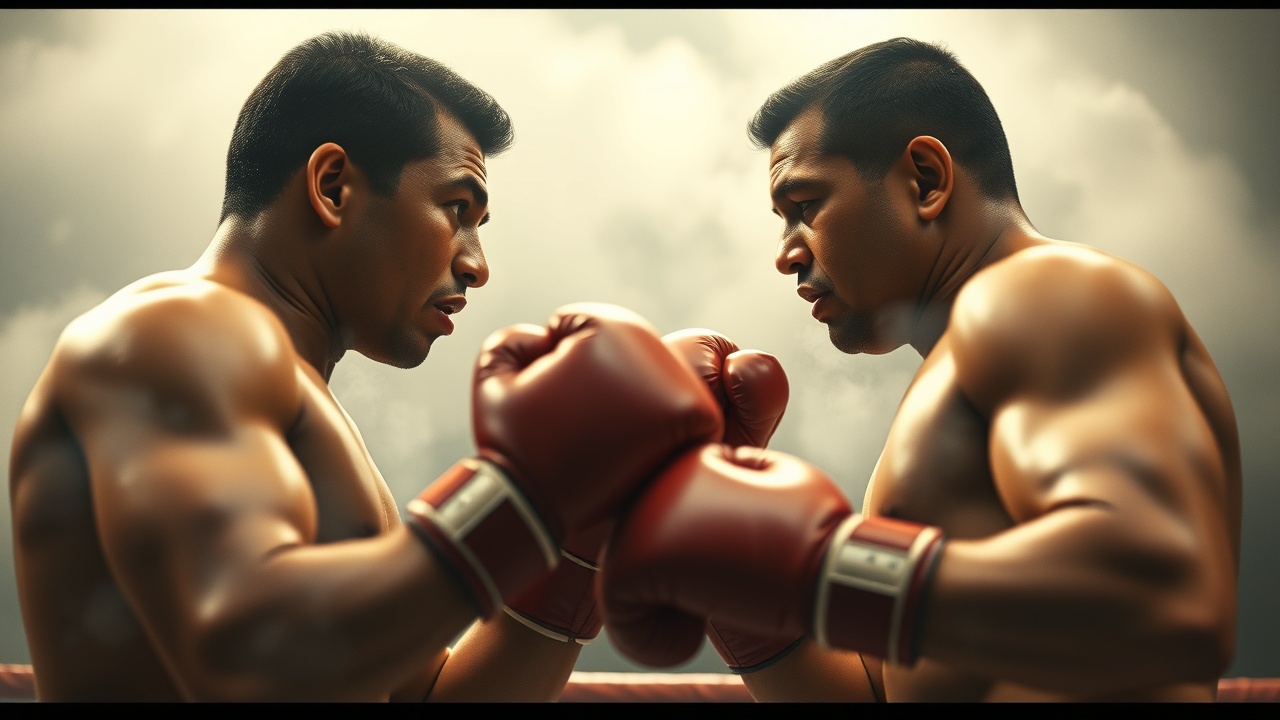The Rivalry of Jake LaMotta and ‘Sugar’ Ray Robinson
The complex saga between boxing legends Jake LaMotta and ‘Sugar’ Ray Robinson showcases not only their contrasting personalities but also the turbulent backdrop of their era, heavily influenced by organized crime. LaMotta, known for his battered spirit and self-destructive tendencies, openly admitted his struggles with self-worth, famously saying,
“I took unnecessary punishment when I was fighting. Subconsciously — I didn’t know it then — I fought like I didn’t deserve to live.”
At the same time, Robinson embodied confidence, showcasing his technical mastery in the ring, rendering him a formidable opponent for the troubled LaMotta.
Their Six-Fight Rivalry
Their six-fight rivalry, spanning nearly a decade, reflects not only their personal battles but also the broader issues within boxing, where mob influence was rampant. LaMotta, hailing from a challenging upbringing in the Bronx, recalled distressing childhood moments, including an instance where his own father encouraged violence as a means to confront his fears.
“Hit ‘em first, and hit ‘em hard,”
remained an unsettling mantra he carried into adulthood, fueling his boxing career.
Robinson, an exceptional athlete, enjoyed both incredible skill and a glamorous lifestyle. Known for his flashy persona and the iconic pink Cadillac, he smashed records in the ring and became a fixture in clubs, illustrating a stark contrast to LaMotta’s grittier existence. Their paths first crossed when Robinson was on the rise, extending his unbeaten streak in the boxing world, while LaMotta, after a stint in reform school, was bent on transforming his life through sport.
Initial Matches and External Pressures
The initial match between these two titans in 1942 marked the start of an intense rivalry; LaMotta suffered defeat but would claw his way back, eventually landing a shocking victory over Robinson just months later. Despite their fierce competition, their lives remained entwined, marred by external pressures, including the mob that sought to manipulate the outcomes of their careers. Both men faced the staggering reality that their ambitions were entangled with organized crime—LaMotta struggled to resist their grasp, while Robinson skillfully navigated the treacherous waters, using his negotiating power to maintain autonomy.
Corruption and Moral Conflict
As their rivalry unfolded, the two boxers found themselves at odds not just with each other but also within a landscape rife with corruption. LaMotta’s desperate bid for prominence eventually led him to make a troubling deal with the mob, agreeing to throw a fight against Billy Fox, which he performed with stunning reluctance. This moment encapsulates the internal conflict that haunted LaMotta, as he contended with his moral compass amidst the lust for title glory.
The Final Battle and Legacy
Their final battle on February 14, 1951, dubbed the ‘St. Valentine’s Day Massacre’, would etch itself into boxing lore. LaMotta faced Robinson again at a time when his physical prowess was fading. The fight was grueling, and although LaMotta displayed remarkable resilience, he ultimately succumbed to a punishing defeat, sealing not just the outcome of the match but also the legacy of their rivalry.
In the aftermath, LaMotta’s life spiraled downward, marred by legal troubles and personal demons, while Robinson continued to face his own challenges both in and out of the ring. This enduring rivalry serves as a lens through which to examine the darker aspects of boxing culture, illuminating the struggles of two iconic figures shaped by their own respective battles with fame, morality, and the devastating influence of the mob.
Further Exploration
For those looking to delve deeper, the accounts of these fighters and the tumultuous ecosystem of boxing are intricately detailed in various biographies and memoirs that capture the essence of their turbulent lives and the sport’s notorious entanglements with organized crime.




